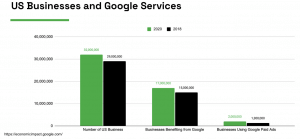In August of 2021, SEO’s everywhere were sent into a panic as they noticed Google had rewritten title tags for pages in some search results. Google had seemingly taken these pages H1 tag and used them as the title.
Google has been busy this summer when it comes to core algorithm updates. Between the new core web vital metrics and GA4 launch, SEO’s felt flummoxed at yet another change they had to monitor.
Google is known to run A/B tests in live search results, so this trend may be just that. Not every site has been affected by this change and there is no way to determine if this change is permanent. However, it would be helpful to understand exactly why Google is doing this.
By understanding Google’s reasoning behind the replacement of titles in the SERP, we can prepare for the possibility of this new normal and ensure our sites, or our client’s sites, are adapted to this new change.
What is MUM?
MUM ( Multitask Unified Model) is essentially the brain of Google as it is a technology that serves to make search engines more powerful.
The latest version of MUM uses AI to become faster and smarter. MUM has more extensive information processing capabilities than it ever has before. One of its most improved features is helping with text to text translation by using T5. Essentially, search engines can understand the meaning or intent of a page faster than before.
This capability has allowed MUM to process questions how humans would ask it in order to serve the best result. It now not only “understands” language but can “generate” it. This is why the new Google title change feature comes in.
Early predictions believe these title changes are occurring because search engines, particularly Google, can read pages much faster than they could before. Paired with the understanding of human language nuances, Google can now decide the best way to answer a query on its own by taking context clues from H1’s as well as other information on the page.
Why is Google deciding to do this?
Businesses, of course. 32 million businesses are in the U.S, only half of them (17M) are benefitting from Google.

2 million, which is less than 10%, actually benefit from Google ads. In order to reach more people and to make Google beneficial to more businesses, they have accelerated the speed in which these changes are rolled out.
How Can SEO’s Prepare?
H1’s have always been important when it comes to page optimization, but they will become even more of a focal point in the coming months. It will be important to answer the question that is being asked in an efficient and quick way. Optimized H1’s with clear cut information to follow will be imperative.
Search engines are not humans, so SEO’s still have more power than the search engines to control the narrative. What is the takeaway from this page? If we know what that is, we can ensure to include that information in that H1 header and paragraph to signal to search engines that this is what we are about.
Marketer’s should be understanding the purpose of each section of their site, and in turn the purpose of the pages that they are promoting. Being able to take a step back and refocus from a page level standpoint, rather than a keyword ranking standpoint will be important. What is the purpose of this page? Are we optimized best to serve this purpose? How long does it take to get to the point? Giving the user what it wants faster is key to success.
Conclusion
There is no need to panic, as we still do not know if these changes will be permanent. In the meantime, continue to work on your page experience and write relevant content to improve your position in the SERP’s.
